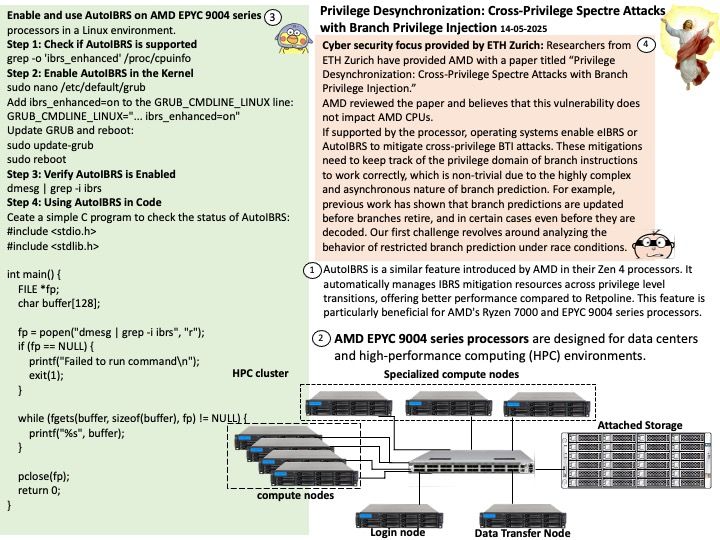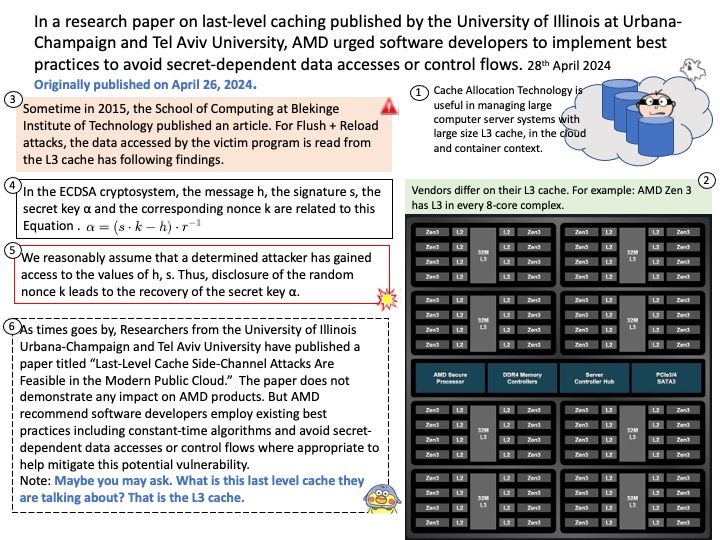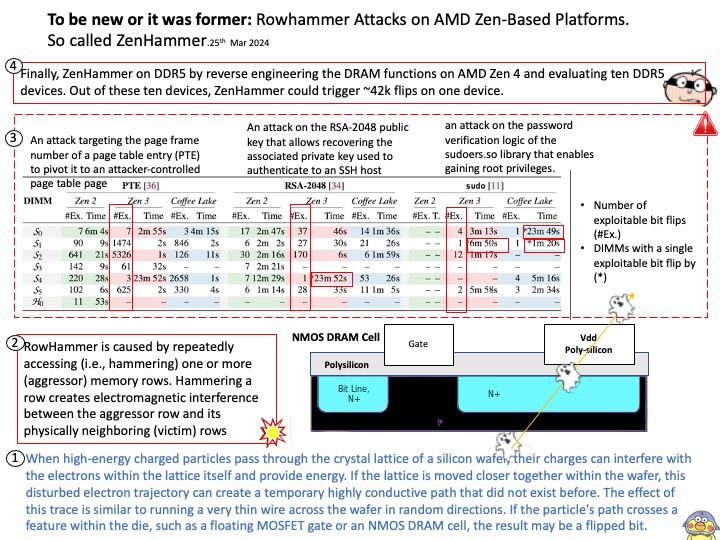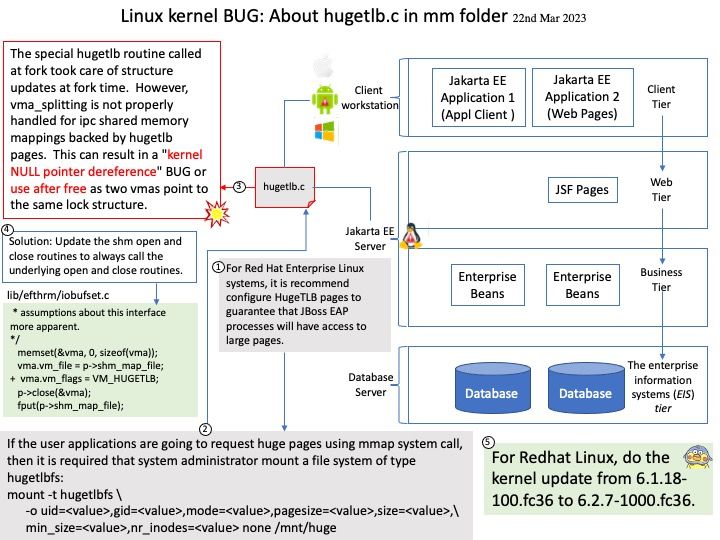
Preface: Enhanced IBRS (eIBRS) and Automatic IBRS (AutoIBRS) are features designed to mitigate the Spectre V2 vulnerability, which affects speculative execution in CPUs.
Background: AutoIBRS is a similar feature introduced by AMD in their Zen 4 processors. It automatically manages IBRS mitigation resources across privilege level transitions, offering better performance compared to Retpoline. This feature is particularly beneficial for AMD’s Ryzen 7000 and EPYC 9004 series processors.
AMD EPYC 9004 series processors are designed for data centers and high-performance computing (HPC) environments. They offer features like up to 96 “Zen 4” cores, 12 channels of DDR5 memory, and PCIe Gen5 support.
Cyber security focus provided by ETH Zurich: Researchers from ETH Zurich have provided AMD with a paper titled “Privilege Desynchronization: Cross-Privilege Spectre Attacks with Branch Privilege Injection.”
AMD reviewed the paper and believes that this vulnerability does not impact AMD CPUs.
If supported by the processor, operating systems enable eIBRS or AutoIBRS to mitigate cross-privilege BTI attacks. These mitigations need to keep track of the privilege domain of branch instructions to work correctly, which is non-trivial due to the highly complex and asynchronous nature of branch prediction. For example, previous work has shown that branch predictions are updated before branches retire, and in certain cases even before they are decoded. Our first challenge revolves around analyzing the behavior of restricted branch prediction under race conditions.
Official announcement: Researchers from ETH Zurich have provided AMD with a paper titled “Privilege Desynchronization: Cross-Privilege Spectre Attacks with Branch Privilege Injection.”
AMD reviewed the paper and believes that this vulnerability does not impact AMD CPUs.
Please see the link for details – https://www.amd.com/en/resources/product-security/bulletin/amd-sb-7030.html








